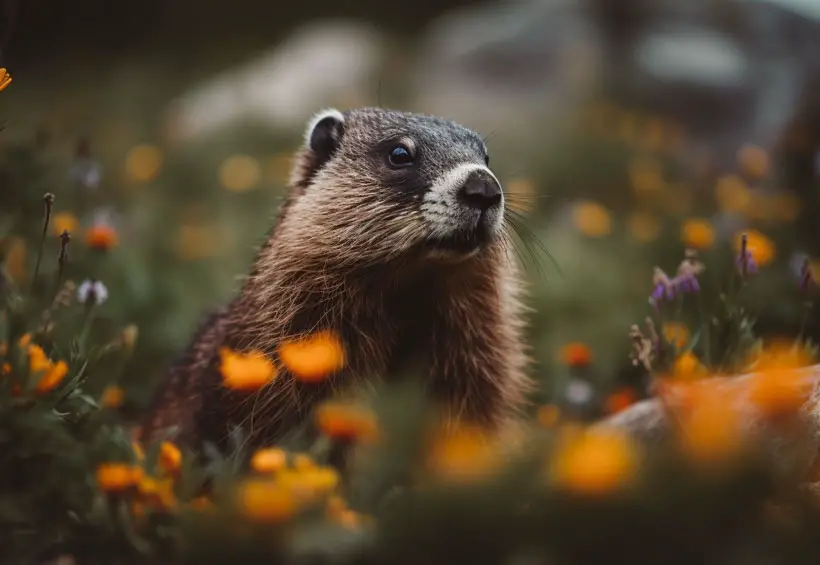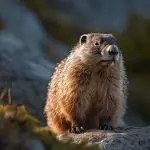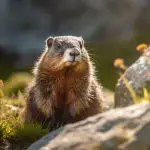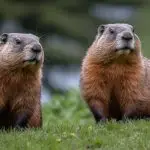Are Marmots Endangered? A Look at the Conservation Status of Marmot Species
Marmots are large ground squirrels found worldwide in mountainous regions. They resemble groundhogs. These adorable rodents have long captured the hearts of people around the world.
But the question remains: are marmots endangered? Some marmot species are classified as endangered by the International Union for Conservation of Nature (IUCN), while others are considered to be of “least concern.” The reasons behind the decline of marmot populations are numerous and complex. They range from habitat loss and fragmentation to climate change and disease outbreaks.
In this article, we’ll examine the conservation status of marmot species and efforts to protect them.
Threats to Marmot Populations
There are several threats to marmot survival and reproduction, which are discussed below with their impacts.

Habitat Loss
This is a significant threat to marmot populations. Particularly, in areas where human activities such as agriculture, logging, and development are encroaching on their habitat.
And the loss of wildlife habitat can lead to a decrease in the amount of suitable foraging and nesting sites available. This can result in reduced survival and reproduction rates for marmots.
Climate Change
As temperatures increase, marmots may struggle to regulate their body temperature, and their food sources may shift or become less abundant.
Additionally, changes in precipitation patterns can affect the availability of water for marmots, which can have significant impacts on their survival.

Disease
Marmots are susceptible to a variety of diseases, including plague, which can be transmitted by fleas. Plague can quickly decimate marmot populations, and outbreaks of the disease have been recorded in several marmot populations.
Other diseases, such as distemper and leptospirosis, can significantly impact marmot populations.
Human Impact
Human activities, such as hunting and poaching, can contribute to the decline of marmot populations. Additionally, human development and infrastructure projects can fragment and isolate marmot populations. This makes it more difficult for them to disperse and find suitable mates.
In addition to climate change and habitat loss, other threats to marmot populations can also be aggravated by human activities.
Conservation Status of Marmot Species
There are around 15 species of marmots distributed across North America, Europe, and Asia. Many marmot species are facing threats to their survival due to the factors discussed above.

Marmot Population Trends for Each Species
Let’s look at the population trends of each species.
- Threatened marmot species: If you want to know ‘Which marmot species are endangered?’, this section will tell you.
- Vancouver Island marmot: This marmot species is critically endangered (IUCN), with only about 200 individuals remaining in the wild.

Habitat loss, predation, and disease have contributed to the decline of this species. NatureServe has marked them as critically imperiled.
- Menzbier’s marmot: These species are marked vulnerable by IUCN. Habitat loss is the main threat.
- Tarbagan marmot: These species are marked endangered species by IUCN.
- Stable marmot species: These marmot species are currently considered to be stable. However, some populations may be declining due to habitat loss and hunting. The following are the species of the least concern according to IUCN.
- Alaska marmot
- Alpine marmot
- Black-capped marmot
- Bobak marmot
- Himalayan marmot
- Long-tailed marmot
- Hoary marmot
- Yellow-bellied marmot
- Gray marmot
- Olympic marmot
Current Marmot Conservation Efforts
Conservation organizations and wildlife management agencies are implementing various conservation efforts to protect marmot species, including:
- Protecting and restoring marmot habitat to ensure the survival of populations
- Tracking marmot populations and conducting research to better understand their habitat requirements and behavior
- Moving marmots from one location to another to establish or enhance populations in suitable habitats
- Managing predator populations, such as coyotes and golden eagles that may prey on marmots and reduce their populations
- Educating the public and those related to wildlife photography about marmot conservation and the importance of protecting their habitat
- Working with local communities, landowners, and other stakeholders to promote marmot conservation and ensure their survival

Here are some of the currently responsible conservation organizations for some species:
- Vancouver Island marmot – The Marmot Recovery Foundation in British Columbia, Canada, has been working to conserve the Vancouver Island marmot.
As a result of their efforts, the Vancouver Island marmot population has increased from a low of 30 individuals in 2003 to over 200 individuals in 2021.
- Olympic marmot – The Olympic National Park is conducting surveys and monitoring programs to track and conserve Olympic marmots.
- Alaska marmot: Research and monitoring of Alaska marmot populations is being carried out by the Alaska Department of Fish and Game. The agency is also implementing habitat restoration and predator control programs to support the species.
- Alpine marmot: The Alpine Marmot Project in the French Alps is working to study and conserve the alpine marmot population through research, monitoring, and marmot habitat restoration efforts.
Importance of Captive Breeding And Habitat Restoration For Marmot Conservation
Regarding marmot conservation, captive breeding and habitat restoration have proven to be highly effective.
In captive breeding, conservationists can establish new populations or enhance existing ones. That’s by breeding marmots in captivity and releasing them into the wild. This helps increase the population and study marmot behavior and genetics.

Habitat restoration efforts can include reforestation, the removal of invasive species, and the restoration of wetlands and meadows. This can benefit the whole wildlife conservation process.
Captive breeding and habitat restoration are crucial to their survival in areas where marmot habitats are threatened.
If you’re interested in learning more about marmots, you might want to explore other fascinating aspects of these intriguing rodents. At Rodents Fact, we have informative articles on marmots vs beavers and the classification of marmots as rodents. Our article on marmots vs beavers explores the differences and similarities between these two fascinating rodents, including their physical characteristics, habitats, and behaviors. Meanwhile, our article on the classification of marmots as rodents provides an in-depth look at the biological and taxonomical aspects of these intriguing creatures. So, if you want to expand your knowledge about the diverse world of marmots, be sure to check out our articles on marmots vs beavers and the classification of marmots as rodents.FAQs
Here are some additional related questions to the endangerment of marmots and their answers.
Q. How are marmots important to their ecosystem?
Ans. Marmots are prey and burrowers that aerate the soil, create habitats, fertilize the soil, and serve as indicators of environmental change. That’s how they are important to the ecosystem.
Q. What can individuals do to help conserve marmot populations?
Ans. Individuals can learn about marmot populations and support conservation organizations to help conserve marmot populations. Moreover, being responsible hikers, reporting sightings of marmots, reducing carbon footprint, etc., can be helpful.
Q. Are marmots protected by law?
Ans. Yes. All species of marmots are safeguarded by the BC Wildlife Act. This makes capturing or moving them unlawful without obtaining the necessary permit.
Conclusion
Based on the conservation status of marmot species, proactive and responsible conservation efforts are urgently needed. Although some marmot species are considered to be of little concern, others are facing significant threats. These threats include habitat loss, climate change, and disease outbreaks.
To protect marmots and other vulnerable species, it is crucial to prioritize conservation efforts that address these threats. Restoration of habitats, monitoring, and public awareness campaigns can be included.
Identifying effective wildlife conservation strategies and understanding the specific factors that impact marmot populations require further research. Our actions now can be decisive in the survival of marmots.




